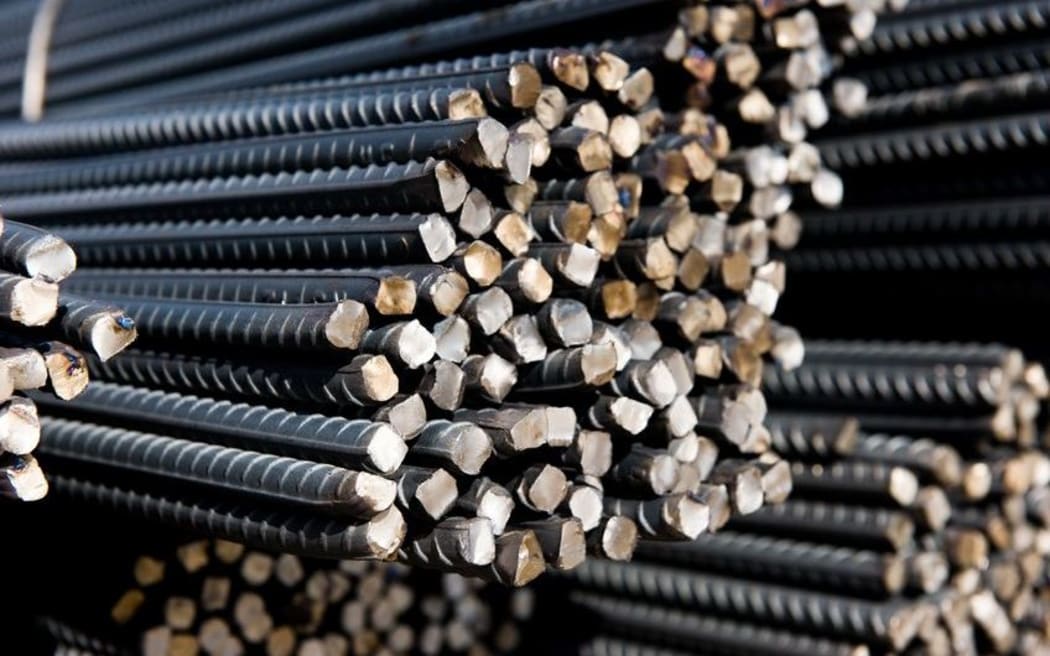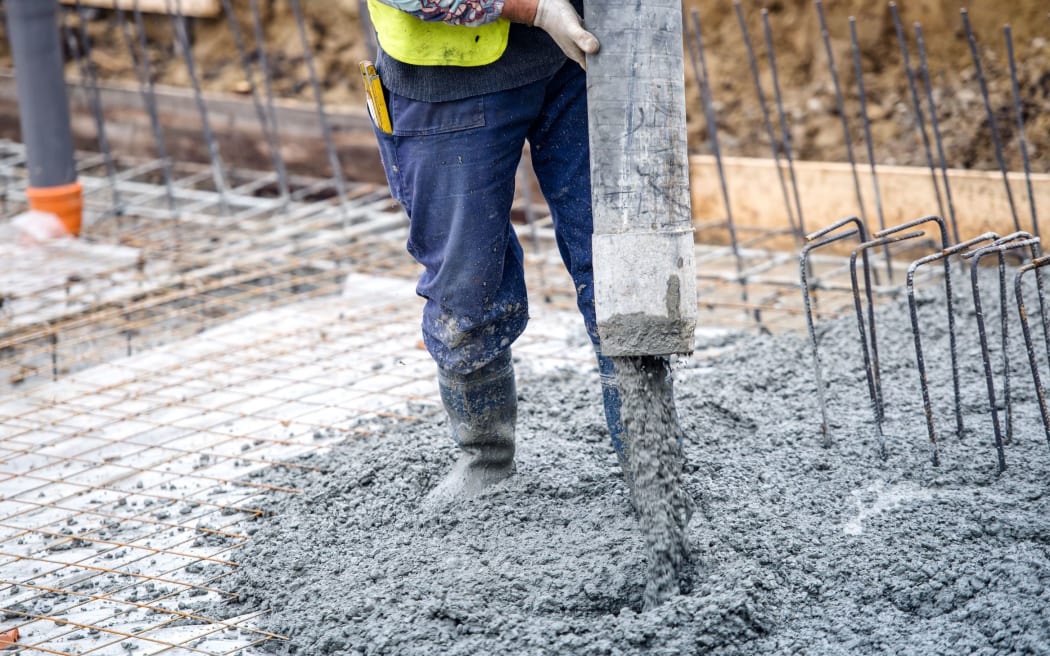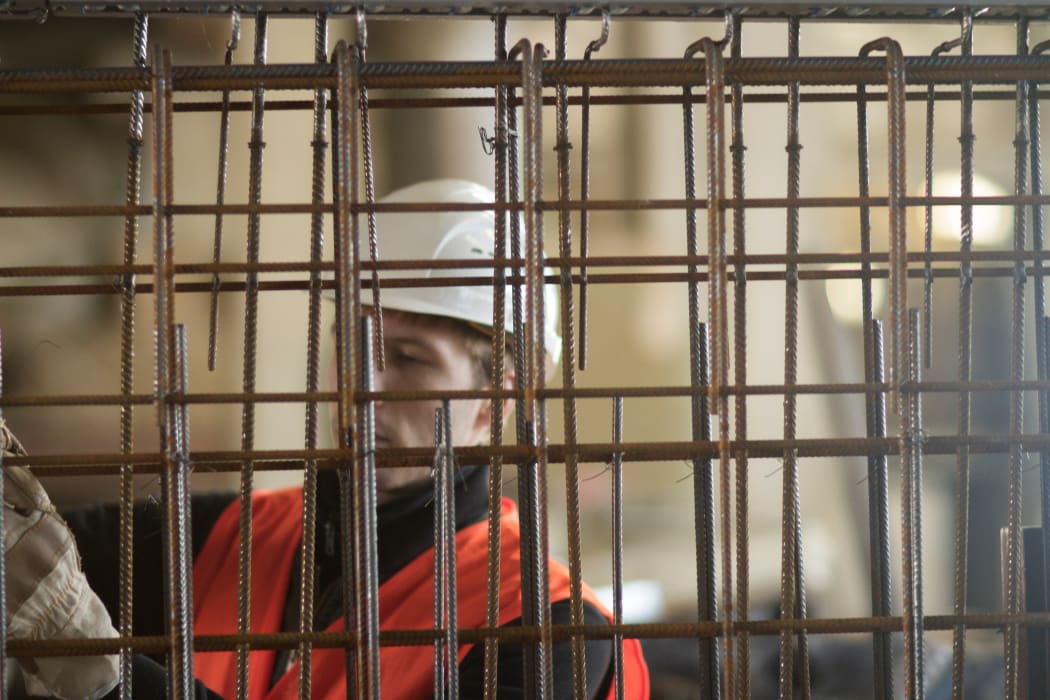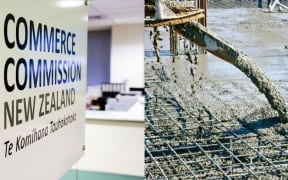Dozens of charges have been laid over misleading claims around steel mesh after issues in the industry were first revealed in an RNZ investigation by reporter Phil Pennington.
We look back at how things unfolded since then.

Steel rods or bars used to reinforce concrete (stock photo). Photo: 123RF
What is steel mesh?
Steel mesh is a lattice of ductile steel rods that are usually used to reinforce and strengthen concrete floor slabs or driveways. After the Christchurch earthquakes, it was found that damage to some buildings could have been reduced if the concrete floor slabs had reinforcing steel to tie the foundations together and the steel had higher ductility. Changes were then made to the Building Code's 'Acceptable Solutions'. While the changes weren't compulsory, the use of 500E reinforcement mesh was considered to be 'the easiest compliance pathway' to meet the code, and therefore the most common practice. However, as a number of factors are considered when determining the overall resilience of the building, opting not to use 500E would not necessarily result in non-compliance.
A timeline of steel mesh claims
- 5 August 2015 - The Commerce Commission received a complaint about the validity of claims made by three companies selling 500E steel mesh in New Zealand.
- 4 March 2016 - Brilliance Steel and Euro Corporation agree to stop selling some steel mesh while the Commerce Commission investigates concerns they may not be up to standard.
- 17 March 2016 - RNZ reports Steel and Tube has been selling critical earthquake-reinforcing mesh wrongly certified as tested by a top laboratory.
- 18 March 2016 - Steel and Tube says that it does not have a laboratory for testing its reinforcing mesh despite its test certificates being signed off by a 'laboratory manager'.
- 19 March 2016 - Steel and Tube's products are expected to be among those tested as part of a wider investigation into failures with seismic mesh, the Ministry of Building Innovation and Employment (MBIE) says.
- 23 March 2016 - RNZ uncovers an initial test of Steel and Tube seismic mesh has revealed it does not meet a key measure of strength.
- April and May 2016 - The Commerce Commission enters into 'enforceable undertakings' with three companies to ensure 500E steel grade mesh can only be used once it has passed stringent testing.
- 7 April 2016 - Steel and Tube puts a hold on supplying its seismic reinforcing mesh and tells building stores not to sell already in stock. Test results received by the Commerce Commission show a Steel and Tube mesh sample did not meet the standard. The tests alone did not prove the mesh was non-compliant with the Building Code and the commission was seeking more information from the company.
- 8 April 2016 - The Commerce Commission reveals it is testing the steel mesh of the country's leading mesh maker, United Steel. United's mesh passes. Builders warn costs could go up and construction of houses may be delayed due to disruption in the market.
- 9 April 2016 - Fletcher Distribution's mesh passed tests by the Commerce Commission. Building regulators are checking how much Steel and Tube seismic reinforcing mesh has been used in commercial or multi-storey buildings, as wire rod maker Pacific Steel denies a conflict of interest over testing. MBIE says it's not yet clear how many buildings the mesh has been used in, but the buildings will be assessed on a case-by-case basis once it knows.
- 13 April 2016 - Building and Housing Minister Nick Smith orders MBIE to look beyond mesh to other products deemed to be critical to a building's safety.
- 29 April 2016 - Steel and Tube and Euro Corp are permitted back into the seismic reinforcing mesh market but must get each batch of mesh independently tested and show the results to the Commerce Commission.
- 24 May 2016 - Tests by the Commerce Commission showed the sheets of mesh from three out of five companies failed in almost all cases to reach the required standard of 10 percent ductility, or stretchability. Sheets from Euro Corp scored just 1.7, 3 and 4.5 percent, while Steel and Tube had a run of three sheets with an average score of under 6.5 percent. Mesh from Brilliance Steel recorded slightly higher test results, but still not above the 10 percent.
- 1 June 2016 - Steel and Tube is revealed as the New Zealand importer of 1600 tonnes of substandard steel for use in four bridges on the $450 million Huntly Bypass, which forms part of the $2 billion Waikato Expressway.
- 12 June 2016 - The New Zealand Transport Agency admits that weak steel began to be installed as piles for bridges on the Huntly Bypass before local test results had come back.
- 16 June 2016 - The New Zealand Transport Agency says it is trusting Steel and Tube to investigate itself, after the company imported 1600 tonnes of substandard steel for the Huntly bypass.
- 19 August 2016 - The government calls for submissions on proposed changes to the Building Code to strengthen steel mesh.
- 31 August 2016 - A book-building is launched in Auckland, backed by a London law firm, in an attempt to take a class action against steel mesh makers and distributors, including Steel & Tube in New Zealand. Major UK insurers say the steel mesh in tens of thousands of NZ homes could compromise their insurance.
- November 2016 - The government makes changes to testing requirements, increasing the number of samples which need to be tested, clarifying how testing is done and requiring testing be done by internationally accredited testing laboratories.
- 5 December 2016 - Steel and Tube confirms it is one of three companies who are facing criminal charges from the Commerce Commission after an investigation into sub-standard steel mesh. The company says the decision relates to the application of the testing methodologies, not the performance characteristics of their seismic mesh.
- 7 June 2017 - The Commerce Commission confirms it has laid 29 charges against Steel and Tube for making false and misleading representations about its steel mesh.

Steel mesh is typically used to reinforce concrete slabs. Photo: 123RF

A file photo shows a construction worker selecting steel mesh for concrete reinforcement Photo: Cultura Creative



